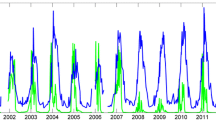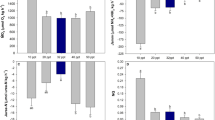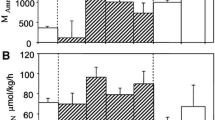Abstract
Aquatic oligochaetes are well known for their ability to resist prolonged periods of anoxia. In fact, the observed mortality is more likely to result from laboratory stress (unnatural sediment, starvation, accumulation of toxic substances) than from lack of oxygen per se. Lumbriculus variegatus feeds under anoxia at 6°C at a low rate and survives more than 40 days. A sudden transfer into anoxic water, however, results in a cessation of defaecation before the gut is half emptied, whereas the gut is completely emptied under aerobic conditions within 8–10 hours (11°C).
Anoxic heat dissipation as measured by direct calorimetry is reduced by up to 80% relative to aerobic rates. The basal rate of oxygen uptake is independent of PO2 above 3 kPa (15% air saturation), but the active rate shows a high degree of oxygen conformity. Whereas the theoretical oxycaloric equivalent yields an accurate estimation of aerobic heat dissipation in Lumbriculus, anoxic catabolism of glycogen explains only up to 60% of the directly measured rates of anoxic heat dissipation in Lumbriculus and Tubifex. Since unknown bioenergetic processes may be important under anoxia, direct calorimetry is required to assess total rates of energy expenditure in anoxic oligochaetes.
Similar content being viewed by others
References
Gnaiger E. & Staudigl, I., 1987. Aerobic metabolism and physiological responses of aquatic oligochaetes to environmental anoxia. Heat dissipation, oxygen consumption, feeding and defaecation. Physiol. Zool. 60 (in press).
Gnaiger, E., 1983. The twin-flow microrespirometer and simultaneous calorimetry. In: Polarographic Oxygen Sensors. Aquatic and Physiological Applications. (Ed. Gnaiger, E. & Forstner, H.), pp. 134–166. Springer, Berlin-Heidelberg-New York.
Gnaiger, E., 1983. Heat dissipation and energetic efficiency in animal anoxibiosis: economy contra power. J. Exp. Zool. 228: 471–490.
Author information
Authors and Affiliations
Rights and permissions
About this article
Cite this article
Gnaiger, E., Kaufmann, R. & Staudigl, I. Physiological reactions of aquatic oligochaetes to environmental anoxia. Hydrobiologia 155, 155 (1987). https://doi.org/10.1007/BF00025641
Issue Date:
DOI: https://doi.org/10.1007/BF00025641




